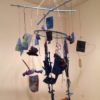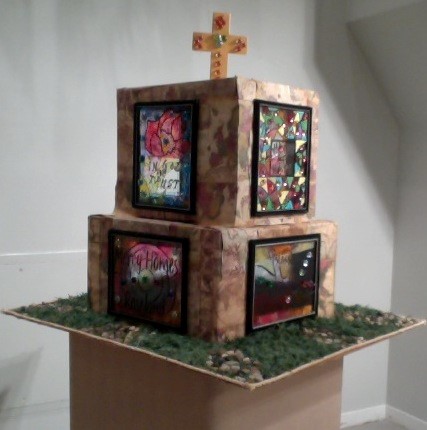Mercy Housing’s Roseland Place Apartments for Seniors in Roseland
Church
Cardboard sculpture with faux stained glass, decorative paper and wooden cross, faux grass, pebbles, and rope
Participating Artists – Ina Bell, Kay Carter, Carolyn Jackson, Clara Johnson, Emma Jones
Teaching Artists – Patricia Stewart
Religion in the African American neighborhood consists of Christian churches of numerous denominations, all promising positive spiritual, social, economic, and political results for the Black Community. Churches have historically been instruments of community empowerment.
The church connects the community. Conversations among neighbors are often about church, religion, the minister, or their role and status within their churches. Plans are often made around choir rehearsal, religious gatherings, teas, and other celebrations or ceremonies. Church essentially becomes the community.
Residents of Mercy Housing’s Roseland Place Apartments created a collaborative three-dimensional structure that illuminates churches in the Roseland neighborhood, illustrating physiological and spiritual paths that connect and unite the community.
We wanted to show the importance of the churches found in the Roseland Community by building a structure that symbolizes them, complete with faux stained glass windows. We talked about our lives and how the church has impacted us, creating the structure to reflect our personal connections and experiences with the church. The windows show the names of several of the churches in the Roseland Area, and some of them state a favorite passage from the bible. A light shines from the inside, and daylight shines in from the outside. The surface of the church is made from maps of the world, symbolizing the importance of the church to the residents of Roseland, and how the church defines our lives as we continue to live on this earth.



